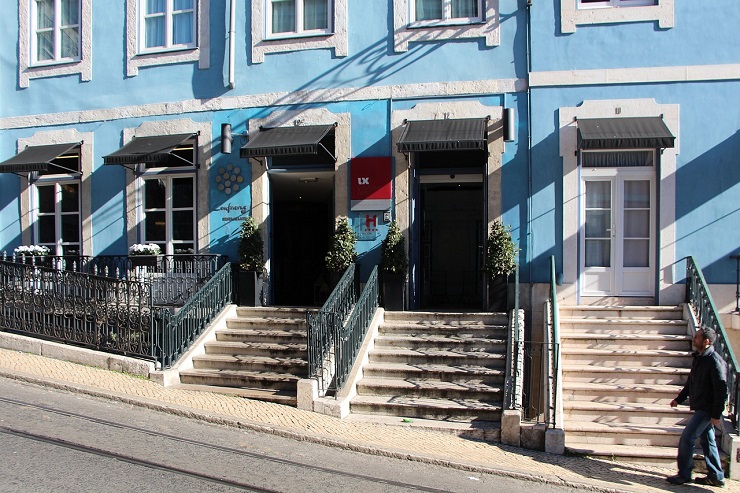4 Tips Overseas Investors Should Know Before Buying Real Estate in Europe
What makes one European city better than another for property investment?
While yield is the immediate answer that comes to mind, there are other important factors at play. Ease of foreign ownership and the amount of bureaucratic red tape involved are certainly considerations.
Who the investor is and his reason for investing can make the same city a great investment prospect or completely unacceptable. For example, a university town with a steady stream of students looking for rental properties may be of no interest to development companies or high-wealth individuals, but would be perfect for a grad student-turned-landlord in a first-home purchase.
We’ve distilled expert opinions, forecasts and trends in order to take a look at what makes a city in Europe a solid investment prospect for the type of investor you are.
1. Look Beyond London (Though Maybe Not Too Far)
London dropped from the top 10 best cities in Europe for property investment early this year, according to the PwC Emerging Trends 2016 report. The city’s fall was blamed on high prices and lower yields. It wasn’t a surprise to most, but Birmingham’s rise to the No. 6 position may have been to anyone not paying attention.
England’s second city went up a pretty spectacular 14 places in the index, leading London in very much in the same manner as Berlin and Hamburg beat out Munich (placing first, second and tenth respectively).
In the report, one investor writes that while London is still getting the majority of the investments, “Berlin is getting a lot of attention. It’s a city that is still underdeveloped from a real estate point of view.” In fact, this year is expected to show an all-time high in levels of leasing, with the tech sector and cheap housing fueling demand.
In 2015, Berlin properties were already getting attention, according to Aspen Woolf, the property investment company. The city’s real estate was seen as good investments, with low transaction costs, a “pro-landlord rental market” and less red tape than in other European cities.
But there is one problem. “Yields,” warned Aspen Woolf, “may not be as great as elsewhere.”
That same year, Aspen Woolf deemed Brussels the best in Europe for property investment. The attraction was that properties available for lease were in high demand. The flip side of this for investors, however, is that both taxes and transaction prices are also high.
In the PwC report, Brussels was rated as a “fair” city investment prospect, coming in 21 out of 28 on the investment and development prospects index. Of course, in the natural course of the market economy, Brussels will attract investors with its strong connection to government and expected public sector deals, as well as some large shopping malls currently in the planning stages.

2. Focus on Purchase Price
If it’s just the price you’re looking at, Lisbon is considered the most affordable capital city in Western Europe, says Lindsay MacNevin at Escape Here. She says a two-bedroom apartment in a “charming neighborhood” could have a sticker price of only 100,000 USD. “Lisbon is a city where you can enjoy a European lifestyle,” she adds, “complete with history, romance, astonishing hospitality, and a seaside location for Latin American prices.”
In fact, it’s so good that MacNevin wonders how long the low prices can possibly last — and she’s not the only one.
In an interview with developer and asset manager Arthur Moreno of Stone Capital in Portugal, Estates Gazette’s Emily Wright says low property prices and rental yields of as much as 7 percent are attracting record levels of overseas investment. Portugal’s Golden Visa scheme helps, too.
And Moreno says the prices will rise: “The average price right now for prime residential in the city center is between 4,000 and 8,000 EUR per square metre. That will go up.”
3. Look to Secondary Cities for Value
As for commercial properties in a city center, the return on investment may have already peaked. “There is still some value to gather,” writes the PWC team, “but it is in rental growth rather than yield compression. In non-prime or lesser prime locations there is more room to grow and more value to be had.”
The same holds true for retail investment properties. Europe Real Estate took at look at second-tier cities last year in the Dutch property market, as set out in a briefing by Savills Investment Management.
“To generate distribution, investor focus should be on prime retail pitches in second-tier cities outside Amsterdam rather than chasing low yields in the capital,” concludes Irfan Younus, senior research analyst at Savills. “We also like logistics investments in good urban locations, particularly e-fulfilment and edge-of-city distribution centres, whilst remaining very selective in the office sector given the oversupply of secondary stock.”

4. Consider Specific Rental Markets in Alternate Cities
In a Knight Frank report, investors are encouraged to look past traditional commercial property investments such as office space and retail.
Specialist property encompasses a wide range of real estate across the accommodation sector, from healthcare and retirement to student rentals. Other assets to consider include data centers, waste management facilities, petrol stations and mixed-use projects.
The best city in the UK for university property investments is Edinburgh, according to the London real estate firm Chestertons. Bristol and Brighton also highly rated in terms of housing prices, local rents and prospective growth in the local housing markets.
“Our calculations may ... prove helpful to investors looking to capitalise on the burgeoning student rental market,” writes research analyst Caspar Bell, “as it shows entry costs ranked against rental yields and is a useful guide as to likely demand from student tenants and price growth over time.”
Sometimes, casting your net wider in search of a good investment means considering places you might never have before. In her list of 5 cities in which to invest in real estate, Elizabeth Goldman at the Alternative Investment Coach included the Polish city of Krakow.
“The key for investing in real estate is ... that you want to achieve a reasonable return on your cash over the longer term and maybe also enjoy some decent rental income in the meantime,” Goldman writes.
“To be able to achieve both these goals, you ideally want to find a landmark location that is a magnet for city dwellers and tourists alike, and where a strong micro-economy helps to support a rise in property prices.”
Krakow, with its Medieval market square deemed a World Heritage site by UNESCO, has a dependable tourist draw (10 million in 2015 according to Radio Poland) and has thus attracted EU funds for property and infrastructure development. Plus, you can still find flats in the middle of the old city for less than 80,000 EUR.
What You Should Know Before You Invest
While there may be no definitive list of the best European cities to invest in property, there are general pointers to consider when looking for a city in which to buy a building to let.
Certainly, you need to know whether the country is politically and economically stable, and if so whether the economy is stagnant or showing signs of growth. Steer clear of security and corruption concerns, and make sure you know the type of income tax that is payable by non-resident property owners before making your investment.
Why note read our article on taking advantage of market uncertainty Embracing Market Volatility.
You should also consider:
-
The yield, or return on investment, you can expect. This calculation should include total acquisition cost and all running expenses, including mortgage payments, insurance fees and maintenance. Details for net calculations are set out at The Balance and The Landlord Blog.
-
Transaction costs should be included in the acquisition cost. These vary from country to country and include purchase tax, building inspection and attorney fees.
-
Pro-landlord laws benefit property owners. These govern how much rent can be charged, the length of leases and the terms (including how eviction works). Sweden, France, Spain and Denmark have some of the strongest pro-tenant laws, and should be approached accordingly.
-
Check to see whether foreign ownership restrictions exist. In Spain, for example, there are no non-resident ownership legal restrictions. In Switzerland, on the other hand, there are annual limits to the number of houses a foreign investor can buy, and the country’s stock of properties identified as second homes is capped at 20 percent.
-
Micro-locations may outperform other areas in the same country, so focus on the market you’re interested in. For instance, the tourist rental market is strong in Croatia’s seaside gems Split and Dubrovnik, while the UK’s student rental market in Sunderland is averaging returns of 6.5 percent.
A 2012 article in The Telegraph rated 20 European cities using these criteria. While the world has changed since then, and Budapest may no longer be your top choice of investment city, it provides a good template you can use when considering various locations.
Also, remember you don’t have to buy a property yourself. You can invest in companies that are developing properties or put your money into funds with real estate in their portfolios, writes the Money Observer team.
“Investors should be wary of funds that are too concentrated in one particular sector or region; a good spread of properties across retail, office and industrial should diversify sector-specific risks,” advises financial planner Gordon Kearney at Fiducia Wealth. “They should also be cautious with funds only holding a small number of properties, which increases tenant-specific risks. Ideally, you are looking for a fund to hold at least 40 properties.”
images by: Tomasz Mikołajczyk, Cam4Heroes, Andrzej Stawujak
Related Articles
Search
Popular Posts
-
Currency symbols around the world
February 9, 2022 -
International Money Transfer Companies Compared: UK
December 11, 2019 -
#CommunityStory: Employment in a borderless world
December 11, 2017


